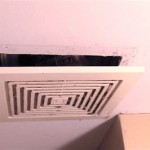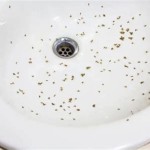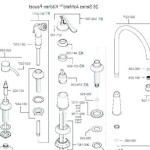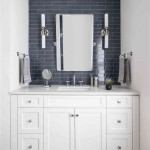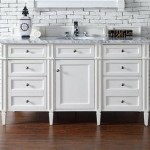How to Get Rid of Black Worms in Your Bathroom
The discovery of small, black, thread-like worms in a bathroom is a disconcerting experience for any homeowner. These creatures, often mistaken for drain fly larvae or other pests, can indicate underlying issues within the plumbing system or the general sanitation of the bathroom environment. Correct identification is crucial for choosing the appropriate eradication methods and preventing future infestations. Understanding the potential sources, life cycle, and effective removal techniques will equip individuals with the knowledge necessary to address this problem effectively.
These "black worms" are often not true worms at all. The most common culprit is drain fly larvae. Drain flies, also known as moth flies or sewer gnats, are small, fuzzy insects that resemble tiny moths. They are attracted to stagnant water and organic matter, making bathroom drains and damp areas ideal breeding grounds. The larvae are dark in color, elongated, and segmented, giving them the appearance of small worms. They feed on decaying organic material that accumulates in drains, pipes, and other moist areas.
Another, less common, possibility is that the "worms" are actually sewage worms, or bloodworms. These are true worms, and their presence almost certainly indicates a problem with the sewage system. They are typically red or dark red (appearing almost black) due to the presence of hemoglobin in their blood. Their presence is a strong indicator of a sewage leak or backflow issue, which requires immediate professional attention.
Proper identification is the first step in effectively addressing the issue. Observing the creature's behavior, physical characteristics, and location within the bathroom can provide crucial clues. For example, larvae found exclusively in drains are highly likely to be drain fly larvae. If they are found crawling on surfaces or in standing water outside of drains, the issue might be more complex.
Identifying Drain Fly Larvae
Drain fly larvae are typically small, measuring between 1/4 to 3/8 inches in length. They have a segmented body and are generally greyish-black or dark brown. One key characteristic is the presence of breathing tubes at one end of their body, which they use to access air while submerged in water or organic matter. These tubes may be visible under close inspection.
These larvae thrive in stagnant water and decaying organic matter. Common locations include the slimy buildup inside drainpipes, standing water in shower stalls or bathtubs, and damp areas under sinks. They feed on bacteria, fungi, and other organic debris that accumulate in these environments. Their presence is a strong indicator of poor drainage or inadequate cleaning practices.
Adult drain flies are small, fuzzy, and have a characteristic moth-like appearance. They are weak fliers and are often seen hovering near drains or walls in the bathroom. While the adult flies are a nuisance, the larvae are the primary concern when it comes to sanitation and potential health risks.
Eliminating Drain Fly Larvae
The most effective approach to eliminating drain fly larvae involves a multi-pronged strategy that focuses on eliminating their breeding grounds and preventing future infestations. This includes thorough cleaning of drains, pipes, and other potential breeding sites, as well as implementing preventative measures to maintain a clean and dry bathroom environment.
The initial step is a thorough cleaning of all drains in the bathroom. This can be accomplished using several methods. One common method involves using a drain snake or plumbing auger to physically remove the buildup of organic matter inside the drainpipe. This tool can effectively dislodge and remove the slimy layer where drain fly larvae thrive.
Another effective cleaning method involves using a specialized enzyme drain cleaner. These cleaners contain enzymes that break down organic matter, effectively eliminating the food source for drain fly larvae. It's crucial to choose an enzyme cleaner specifically designed for drain cleaning, as some products may contain harsh chemicals that can damage pipes. Follow the product instructions carefully for optimal results.
Boiling water can also be used to flush out drains and kill larvae. Carefully pour a large pot of boiling water down the drain. The heat can kill larvae and dislodge some of the organic matter. However, this method is not always effective for removing all traces of buildup, and it may not be suitable for all types of pipes. Avoid using boiling water on PVC pipes, as the high temperature can damage them.
After cleaning the drains, it's essential to address other potential breeding sites. This includes cleaning shower stalls, bathtubs, and sinks thoroughly to remove any standing water or organic debris. Pay particular attention to areas around drains and faucets, where moisture tends to accumulate. Regularly cleaning these areas with a disinfectant can help prevent the buildup of organic matter and deter drain flies from breeding.
Addressing Sewage Worms and Sewage Issues
If the "worms" are identified as sewage worms or bloodworms, the situation requires immediate professional attention. These worms are a strong indicator of a sewage leak or backflow issue, which can pose significant health risks and structural damage to the property. Sewage leaks can contaminate water sources, create unsanitary conditions, and attract other pests. It is important to contact a qualified plumber or sewage specialist to diagnose and repair the problem.
A plumber will typically conduct a thorough inspection of the plumbing system to identify the source of the leak or backflow. This may involve using specialized equipment such as cameras to inspect pipes and drainage systems. Once the source is identified, the plumber will perform the necessary repairs to stop the leak and prevent future sewage intrusion.
In addition to repairing the plumbing system, it may be necessary to disinfect the affected areas to eliminate bacteria and other contaminants. This can be done using a variety of disinfectants and cleaning agents. It's crucial to follow the manufacturer's instructions carefully when using these products to ensure proper sanitation and safety.
Preventative measures are essential to avoid future sewage problems. This includes regular maintenance of the plumbing system, such as cleaning drains and inspecting pipes for leaks. It's also important to avoid flushing inappropriate items down the toilet, such as grease, diapers, and other non-biodegradable materials, as these can clog pipes and contribute to sewage backups.
Aside from physical removal and drain cleaning, there are other preventative measures that can be implemented to minimize the chances of recurring infestations. Maintaining a clean and dry bathroom environment is crucial. This means regularly cleaning surfaces, wiping up spills promptly, and ensuring proper ventilation to reduce humidity levels. High humidity creates an ideal environment for drain flies and other pests to thrive.
Regularly flush drains with hot water and a mild detergent to help prevent the buildup of organic matter. This can be done once or twice a week. Using a drain strainer can also help prevent hair and other debris from entering the drainpipe, reducing the food source for drain fly larvae.
Inspect and repair any leaky faucets or pipes promptly. Leaks create a constant source of moisture, which can attract drain flies and other pests. Sealing cracks and crevices in the bathroom can also help prevent pests from entering. Use caulk or sealant to seal any gaps around pipes, fixtures, and walls.
In cases of severe infestation, professional pest control services may be necessary. A pest control technician can assess the situation and recommend appropriate treatment options, such as insecticides or other pest control methods. It's important to choose a reputable pest control company that has experience in treating drain flies and other bathroom pests.
When using insecticides, it's essential to follow the product instructions carefully and take precautions to protect yourself and your family. Avoid spraying insecticides directly into drains, as this can damage pipes and contaminate water sources. Instead, focus on treating areas where adult drain flies are seen, such as walls and ceilings.
The presence of "black worms" in a bathroom is often a signal of underlying issues with drainage, sanitation, or plumbing. Correct identification of the creature is crucial for determining the appropriate course of action. While drain fly larvae are the most common culprit and can be addressed with thorough cleaning and preventative measures, the presence of sewage worms indicates a more serious problem that requires professional attention. By understanding the potential sources, life cycle, and effective removal techniques, homeowners can effectively address this issue and maintain a clean and sanitary bathroom environment.

Little Black Drain Worms In Shower How To Get Rid Of Them

You Could Get Black Toilet Worms In Your Loo Even After It S Been Bleached But This Is How To Rid Of Them The Sun

How To Get Rid Of Drain Worms

How To Get Rid Of Drain Worms Plumbwize

How To Get Rid Of Drain Flies Fantastic Pest Control

How To Get Rid Of Drain Worms
In Our New Home Tiny Black Worms Come Up Into The Bathroom Sink When Is Filling I Immediately Poured Bleach And Then Draino Next Day What Are Those

How To Get Rid Of Worms In The Bathroom And Drains

How To Get Rid Of Earthworms In Bathroom Follow These Simple Steps

How To Get Rid Of Drain Worms In The Shower Tiny Black High Cleaners Cleaner Unclog
Related Posts
